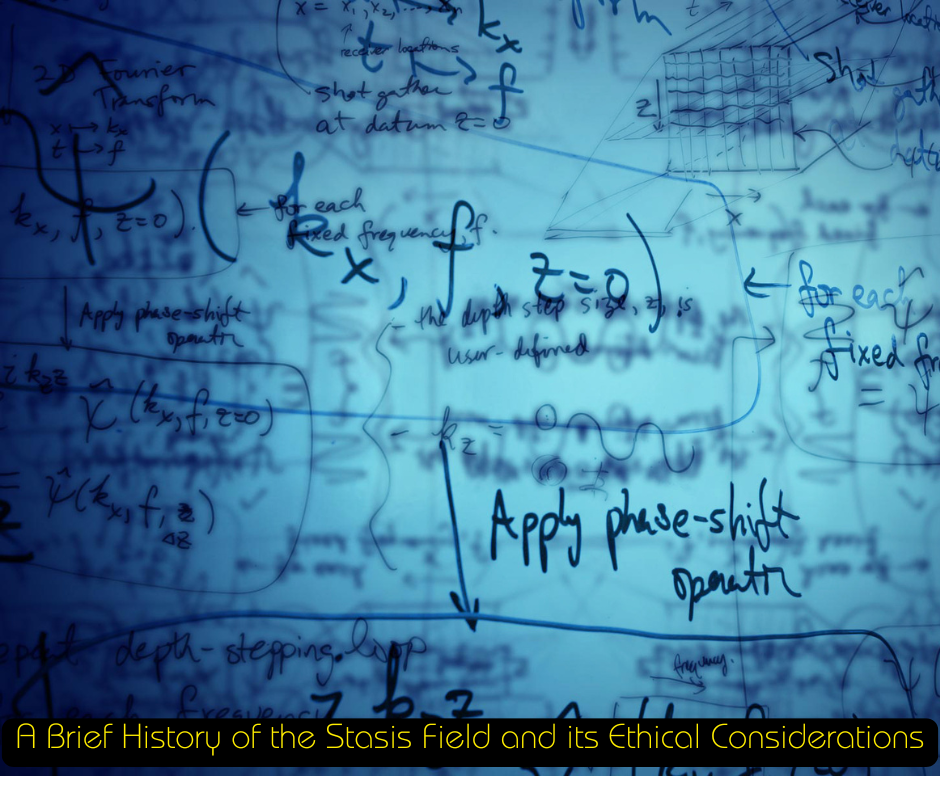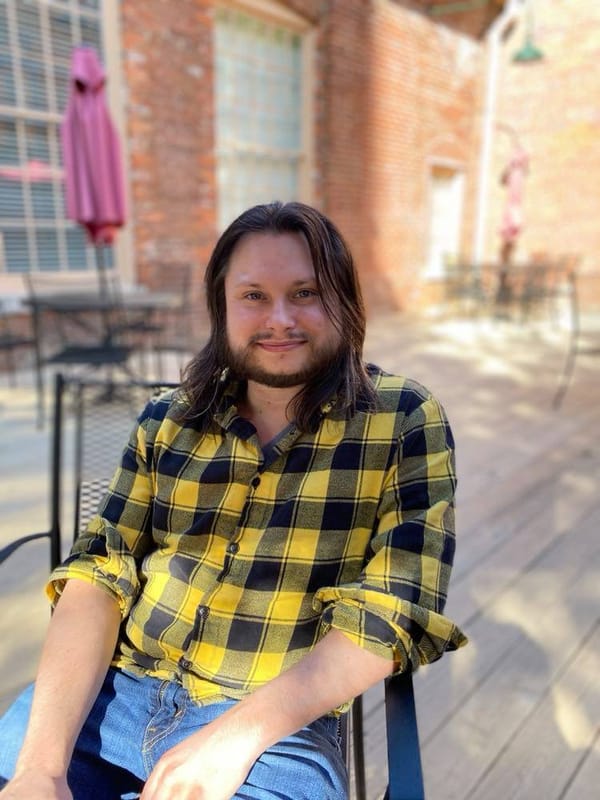A Brief History of the Stasis Field and its Ethical Considerations

by Andrew Kozma
The strangest quality of the stasis field was not that it stopped time, but that some version of time still passed for those inside it. Here, we are talking about objective time vs. subjective time, i.e. the universe’s irrevocable aging second by second vs. the ten years you age upon seeing a car narrowly miss sideswiping your daughter’s bike. Inside the stasis field, people can move, sing, breathe, eat, and drink, though the latter two aren’t recommended since otherwise edible substances just clump in the stomach, refusing digestion. This was all an explicable side effect of quantum mechanics according to Hyestr Mulin, who won a Nobel for the equations which explained the stasis field and its side effects, though explain in this sense meant mathematically proving what happened was indeed possible. What was happening? Ask the equations. Even Mulin couldn’t translate the numbers into reasons.
What didn’t need translation was the most obvious quality of the stasis field: it prevented death. At a demonstration of the stasis field as a food preservation device, the demonstrator, a Mr. Ils McCray, was shot by a man who believed the stasis field would bring about the end of the world. Seven bullets to the chest should’ve meant instant death, but the stasis field kept him alive until the EMTs arrived.
You’d think such an invention would revolutionize the world. The military co-opted the technology immediately yet soon abandoned their plans. The stasis field prevented dying, but not blood loss, and without blood the body can’t function. Eagerly adopted by ambulances and emergency rooms, experience proved bodies can be too damaged to survive, and, though the stasis field kept death at bay, we’ve no way to repair the traumatized body. Over half the time, stabilized patients removed from the stasis field died. Eventually, stasis fields became expensive curiosities, hospitals using them to keep dying patients alive until their relatives arrived to say goodbye.
Even though commercial applications had failed, stasis fields were promoted as enigmas by StayTech, the company owning the patent for the stasis field. As a result of vigorous lobbying, Secretary of Health Davis Ruben made sure every temple of science from NASA’s experimental laboratories to the smallest high school science classes had their own stasis field. It was in those most provincial, least overseen places that the standard use of the stasis field was finally realized: a dissection aid.
In Ms. Granta Ribley’s biology class, the stasis field had long gone unused—except as a way for Ms. Ribley to keep her coffee hot and to prevent student cell phones from ringing—until a partially-dissected frog was stored there when a fire drill interrupted the day’s lesson. The next day, Ms. Ribley found the frog corpse exactly the same as when she’d left, not even bothered by flies, and so she decided to use the stasis field for the dissection itself. Once reported by the town paper as a local teacher’s quirky behavior, stasis field dissection spread across the world, becoming especially important to medical schools since it prolonged the use of instructional cadavers.
With the introduction of the stasis field, it was only a matter of time before someone donated their body to science before they were dead. Jules Bant applied to dozens of medical schools to be a “living cadaver” until St. Mary’s of Greater Baltimore agreed, their lawyers assuring the teaching hospital that it was all legal, regardless of the optics. Bant did not die on the dissection table. The stasis field allowed relatively drastic exploratory surgeries to take place without risk to Bant, organs delicately removed from their position in the body so students could see the body from the inside as a living organism. In this way, the brain could be viewed pulsing away at thought and dyed blood followed from the heart to the tiniest veins. As an educational tool, Bant was simultaneously a whole being as well as a collection of disparate parts. Soon, every medical school had their own Bant equivalent, and a small number of psychiatrists even encouraged the process as a way to deal with some forms of suicidal ideation, enabling the subject to “die” without having died. The resulting studies are still hotly debated.
As history demonstrates time and again, every tool humanity invents will be turned to violence. In Detroit, a small group of urban explorers followed a series of extension cords to an enclosed room in an abandoned warehouse to find an 8’ by 8’ stasis field and, inside, the body of Hazel Ramirez, a college student at University of Detroit Mercy who had gone missing two years before. Every single part of her had been carefully removed from her body and laid out inside the stasis field. The eyeballs cradled in tiny dishes, optic nerves still attached to a brain unhoused from the skull. In an interview, Devon Richter, one of the explorers, mentioned “the eye quivering, trying to focus on me. She was still alive, man.”
When the Stasis Killer was finally apprehended, what could the sadistic billionaire Jasper Zinn be charged with? His lawyer provided signed contracts for each victim the FBI found, claiming they assented to the process and were well paid for it—though those payments are locked in Swiss bank accounts no one else has access to. There was no murder, since, as long as the stasis fields remained active, none of his victims would die. According to tests, they were fully aware of their surroundings. As both witnesses and evidence, they will remain that way as long as the various Zinn trials last.
If there is a final chapter for the stasis fields, it is in the efforts of those families of Zinn’s victims and how they fight to prevent the fields from ever being turned off. They hope for a medical miracle to reassemble their child, spouse, or sibling. Until that happens, they will keep their loved ones alive, no matter the financial cost.
© 2025 Andrew Kozma




